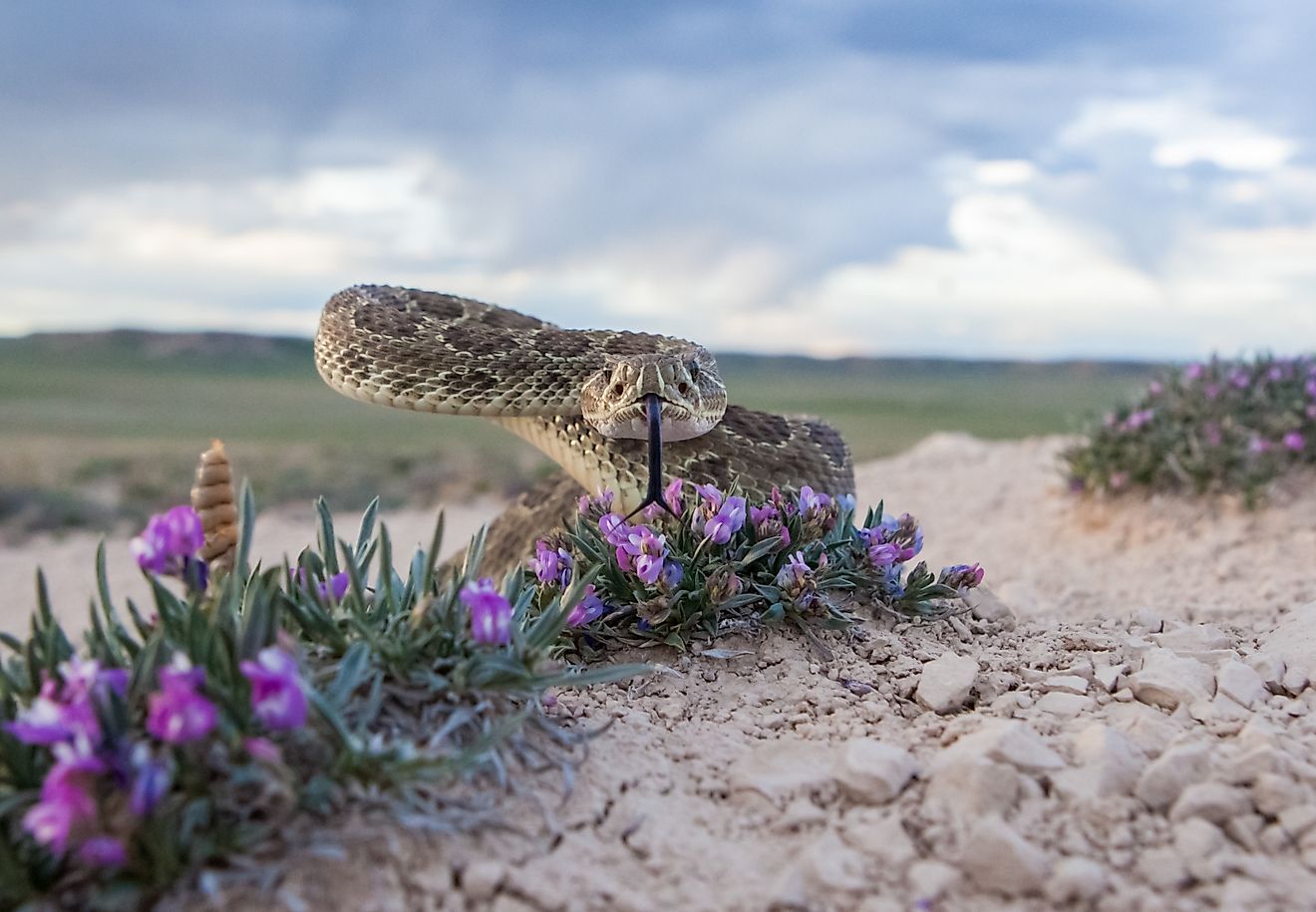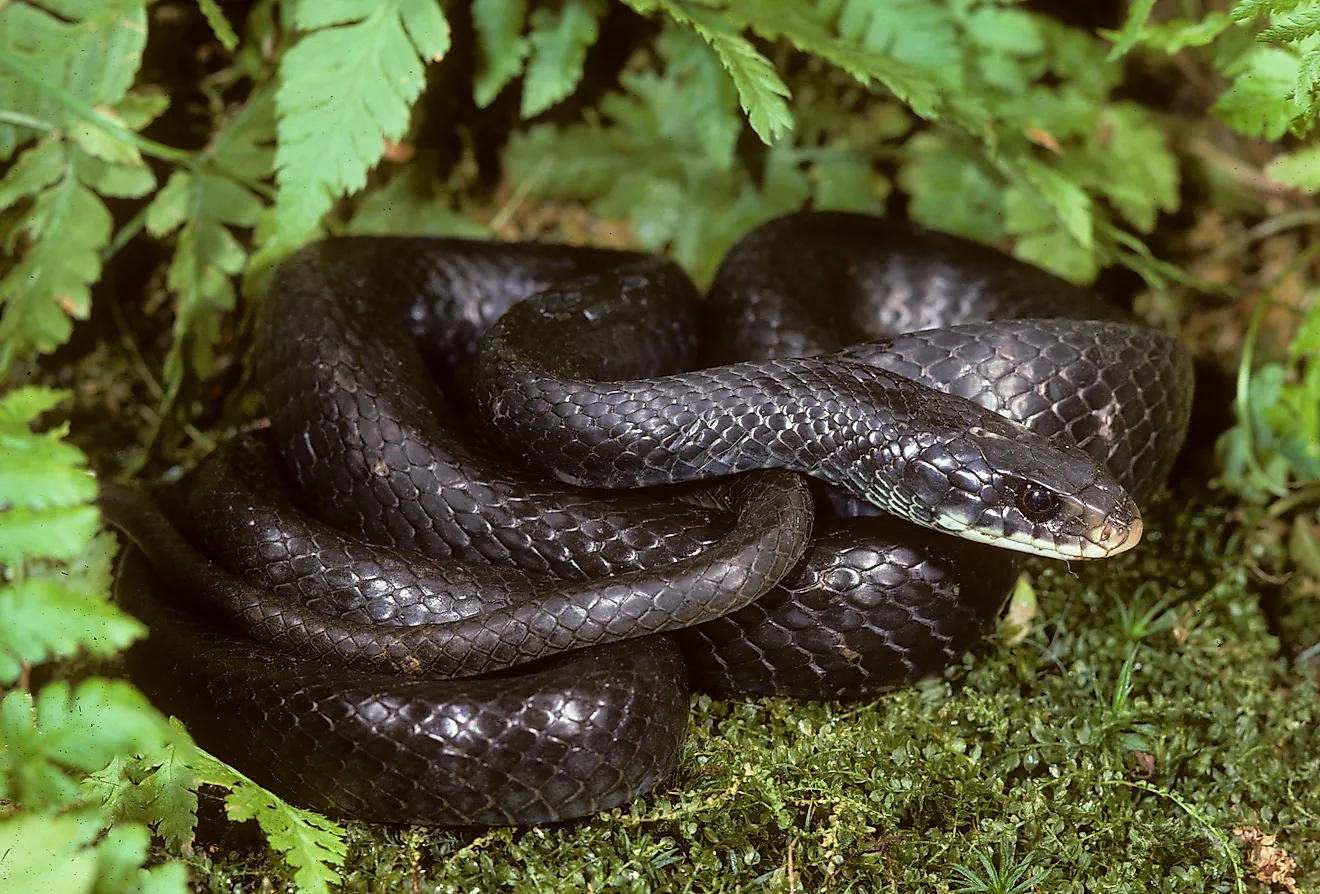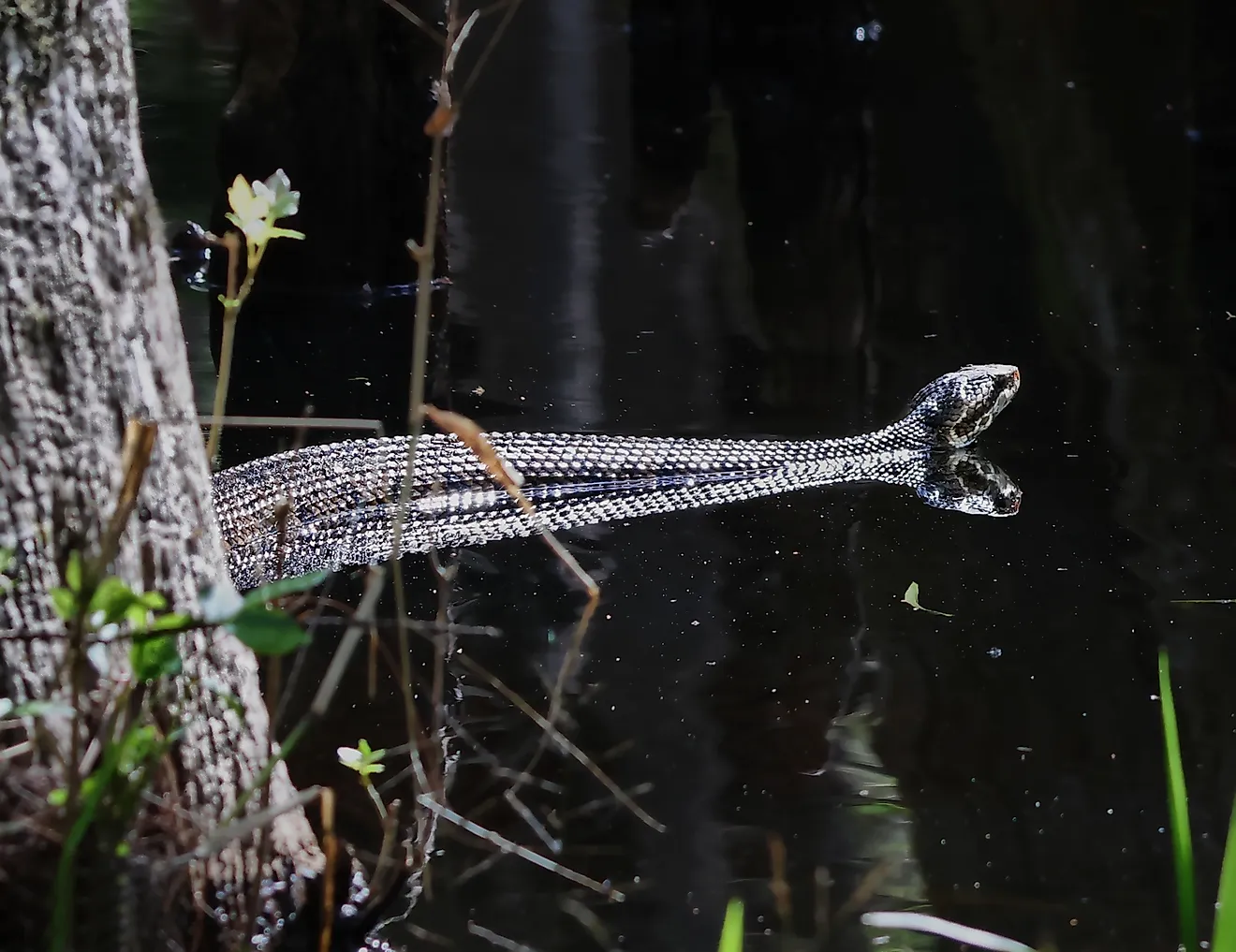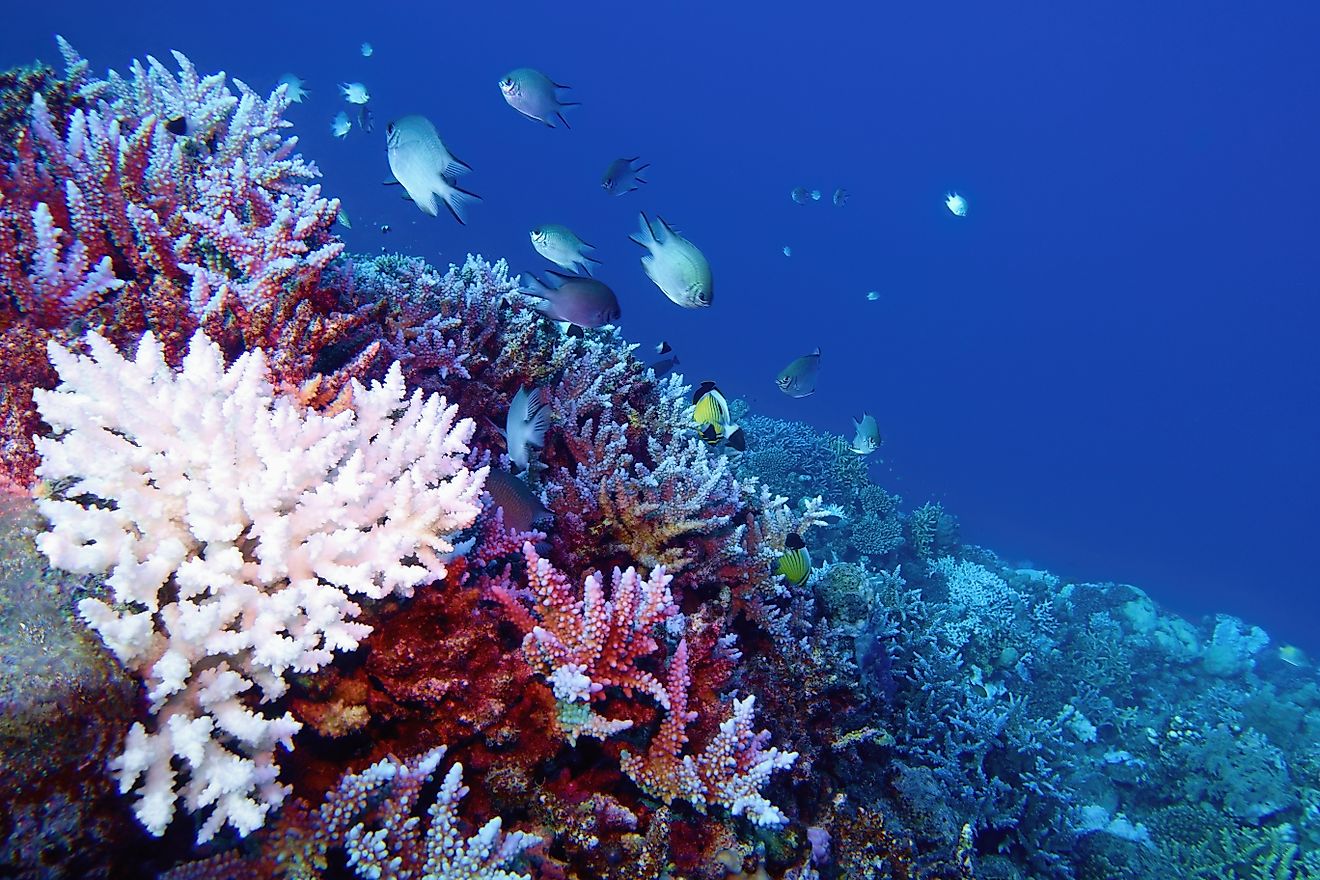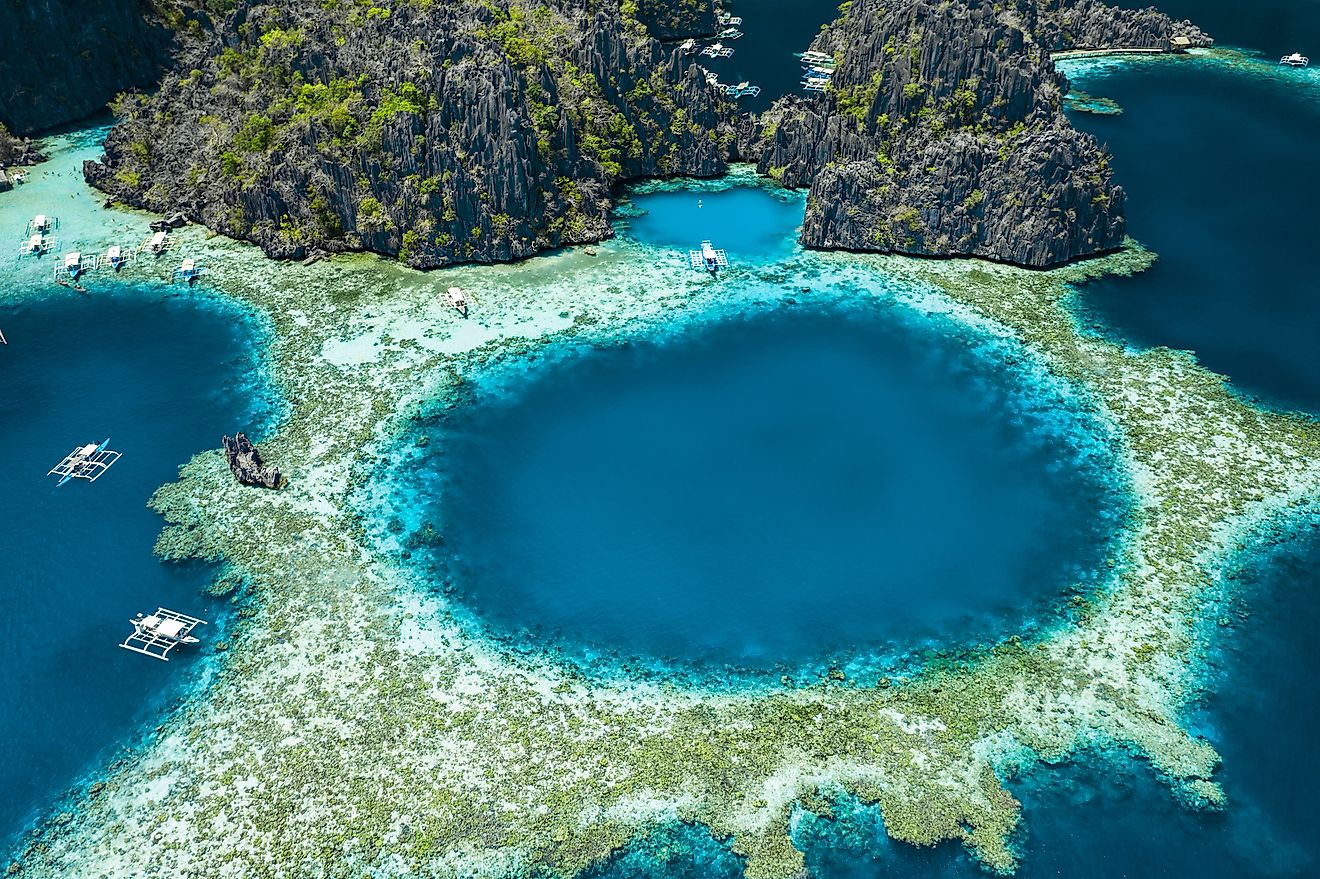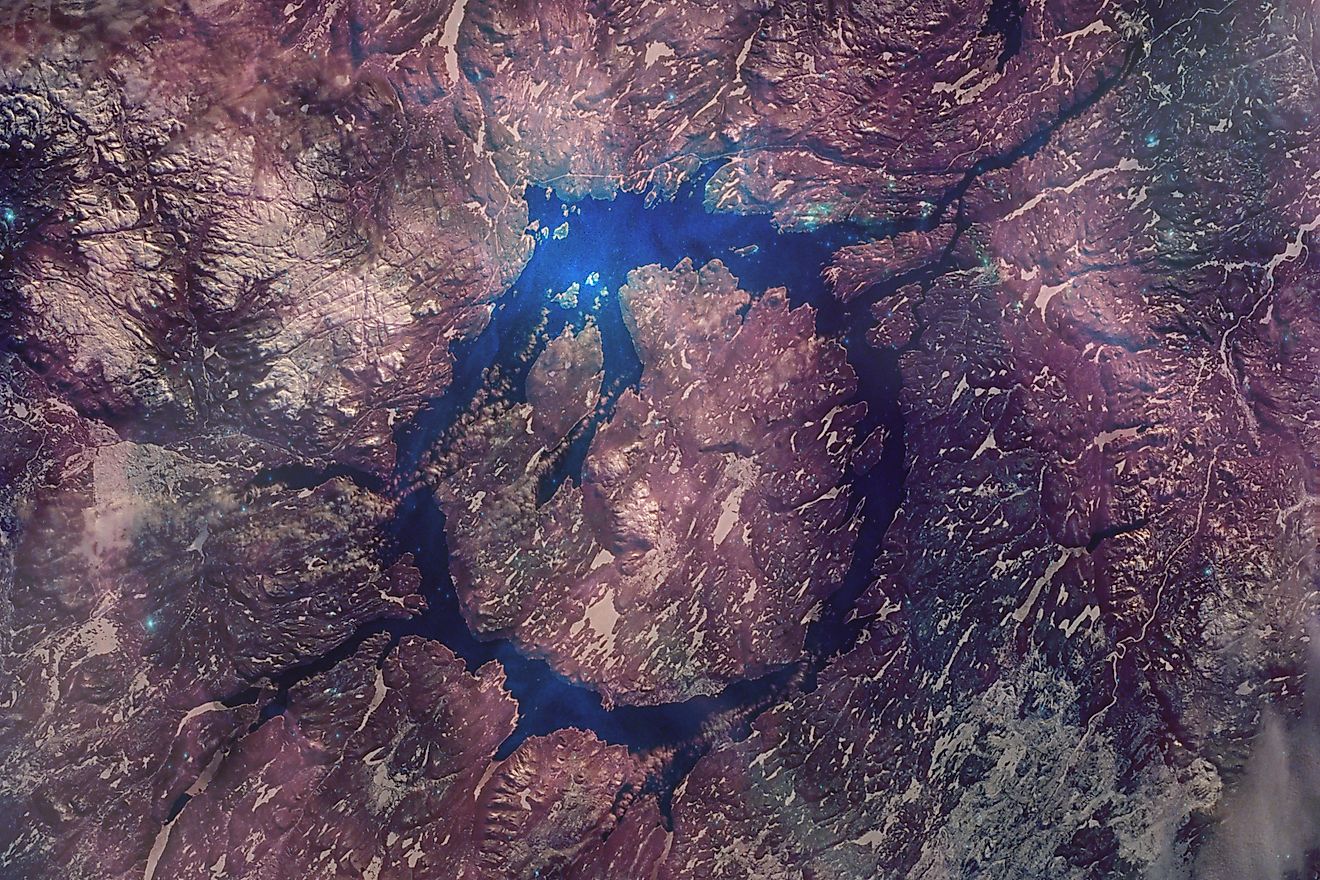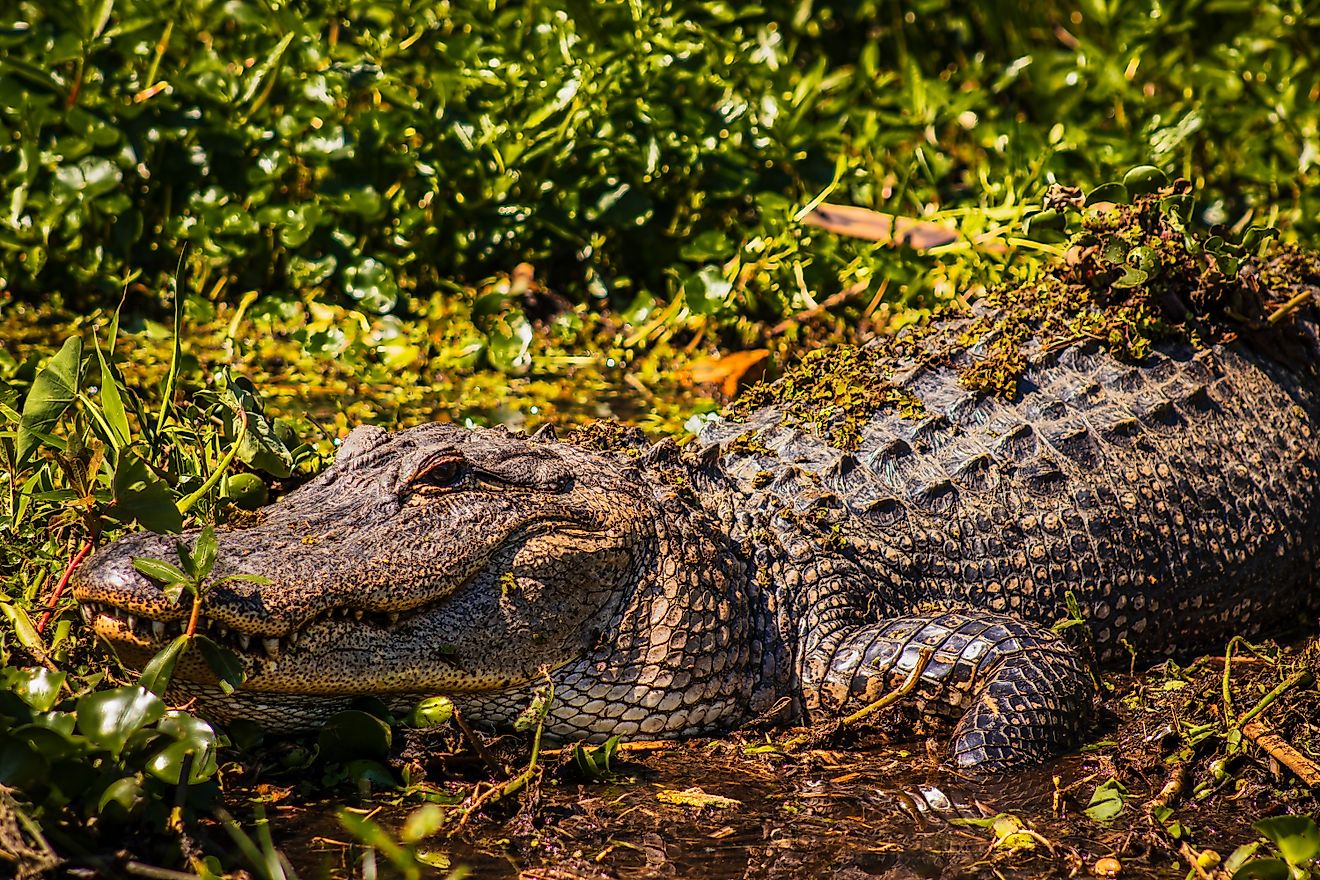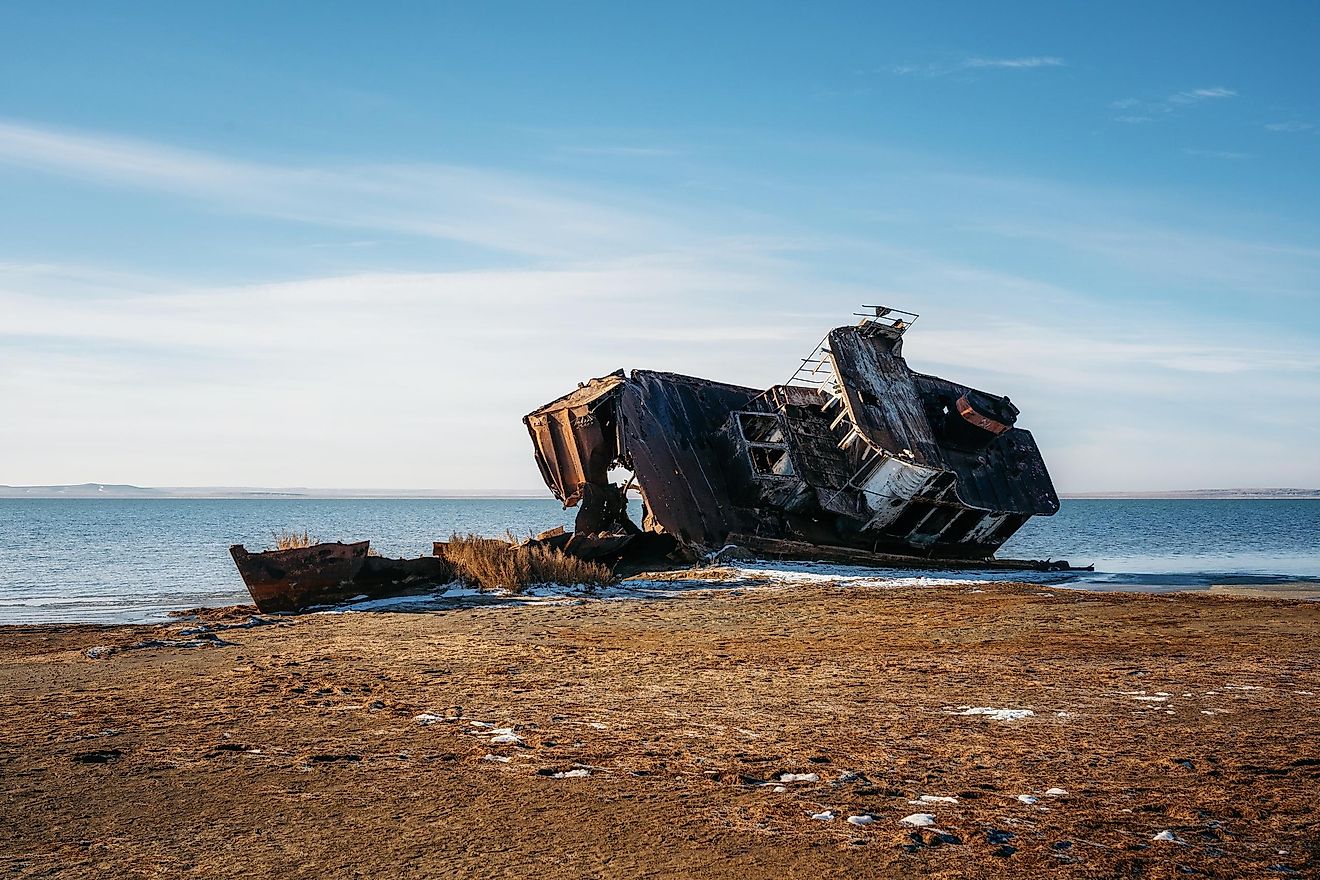Lake Tanganyika
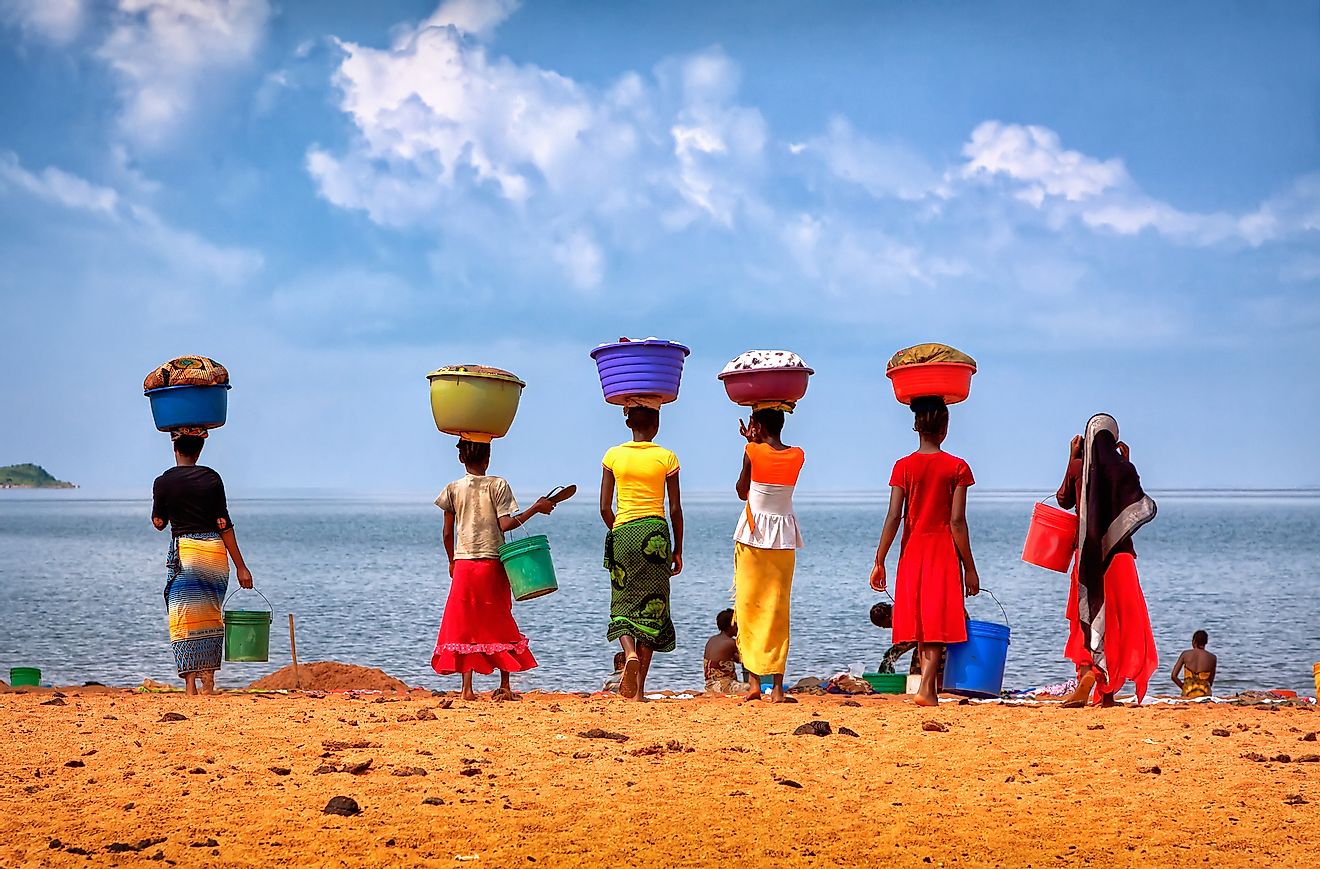
Lake Tanganyika is an ancient lake located in east Africa. Its eastern border runs along the west coast of Tanzania, while the lake’s western side is bordered by the Democratic Republic of Congo. The northern point of the lake also borders Burundi, while the south dips into a small portion of the Zambian border.
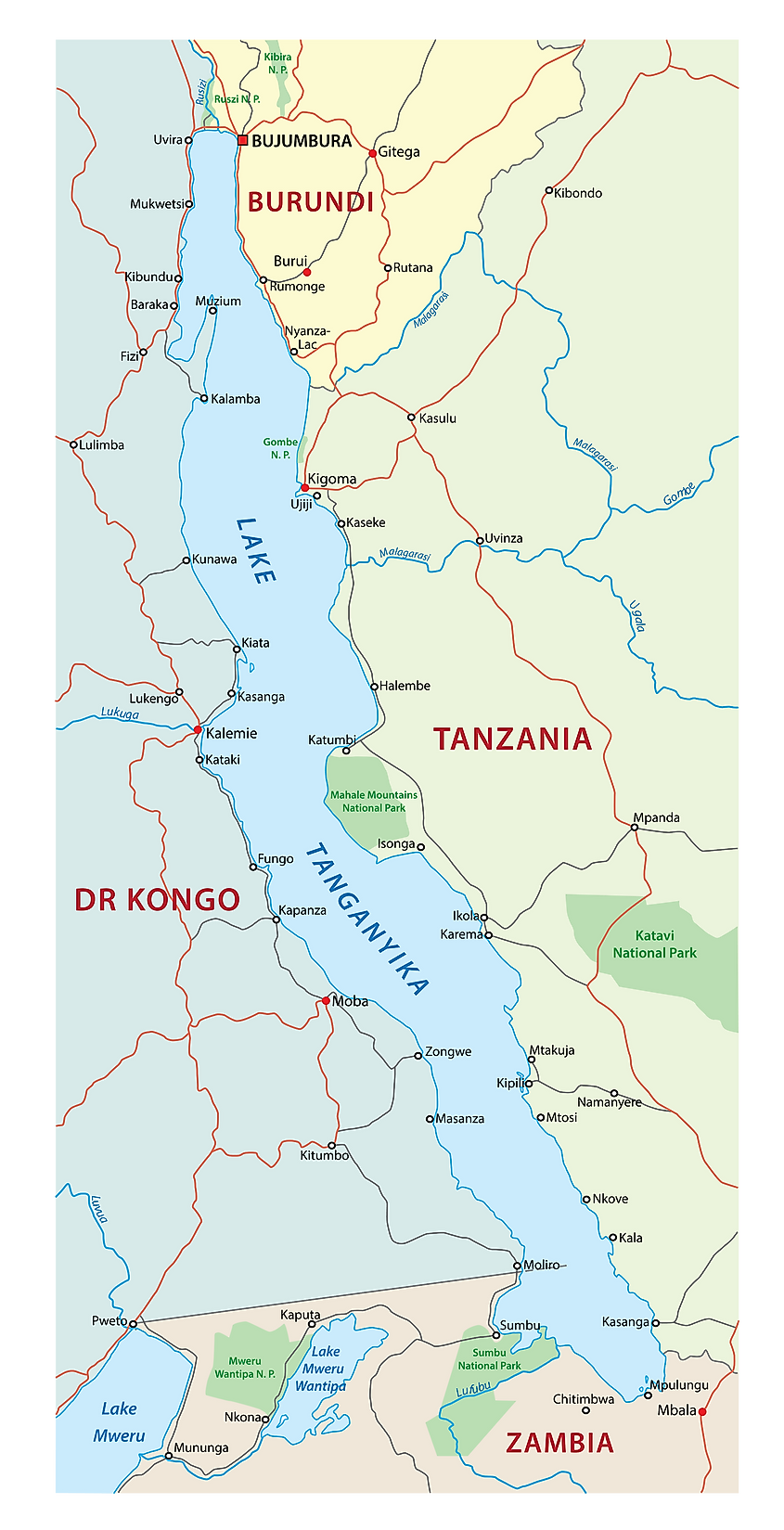
Contents:
Size
The lake is extremely long and skinny, and is the longest lake in the world, measuring over 400 miles long. In sheer size, it takes the title of second largest, with an average volume of 18,900 cubic kilometers (4,500 cubic miles). It is also the deepest lake in Africa and makes up roughly 16% of Earth’s supply of fresh water. The surface area of the lake fluctuates somewhat, but generally measures around 32,900 square kilometers, or 12,700 square miles.
Landscape
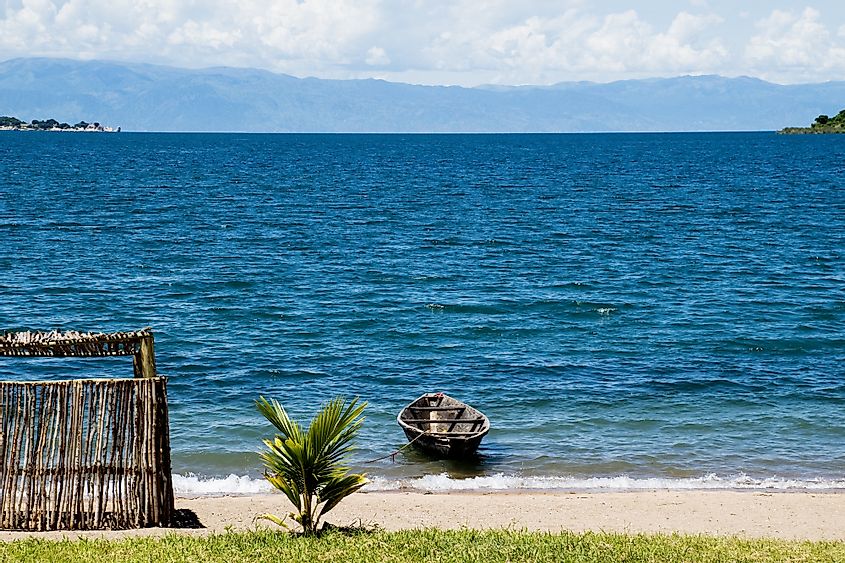
Lake Tanganyika is in fact the largest rift lake found in Africa. Along with bordering multiple countries, the lake is also positioned on the Albertine Rift, which is part of the western branch of the East African Rift. The lake is located at a higher elevation within the mountain range, rather than on the valley side of the rift.
The primary source of water, and the cause for the fluctuation of the water levels in the lake, is precipitation. Around 90% of the water in the lake comes directly from rain or other precipitation. Water does naturally flow into the lake as well, though, through a series of rivers and streams. Tanganyika has two main river sources. Ruizizzi River flows in the lake from the north and passes through Kivu Lake. The second river, which is the second largest in Tanzania, flows into the lake from the east. This river is called the Malagarasi River. For drainage, the lake feeds into the Lukuga River, which in turn drains into the larger Congo River. This drainage only happens when water levels are high enough, though, so at times throughout history the lake has been endorheic, meaning it did not have a viable drainage system.
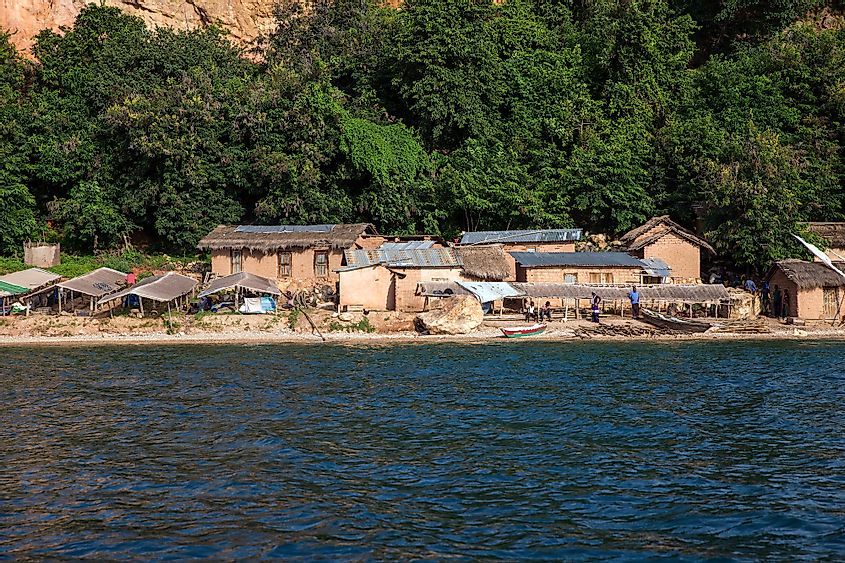
The lake also has several islands in it. Because the lake is positioned on several borders, the islands within the lake belong to various countries, depending on their proximity to any given mainland. Some of the most notable are Kavala Island, which is part of the Democratic Republic of Congo, as well as Mamba-Kayenda and Milima islands which are also part of the DRC. Two prominent Zambian islands are Kumbula Island and Mutondwe Island.
History
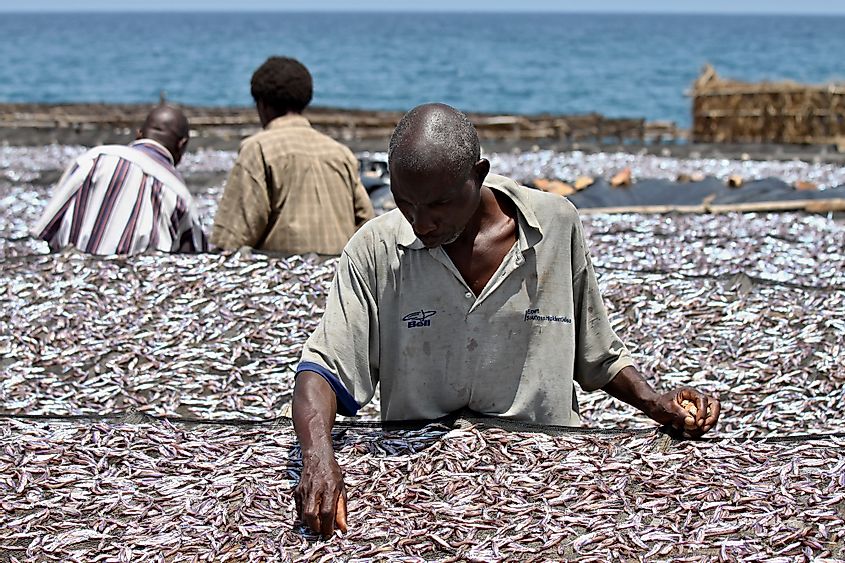
While the original history of Lake Tanganyika is not specifically known, it’s ancient status and formation imply that it was a habited area throughout the stone age.
The lake did feature prominently, however, in World War I. It was occupied by Germany in the early portion of World War I. It was used both as a base, and as a way to ferry soldiers and cargo. Its remote location made it an ideal location for unexpected attacks by German troops on allied forces. In retaliation, the British Royal Navy mounted an attack via armed motorboats which were transported by rail to the lake. Belgians set up an airbase in Albertville, located on the western shore, and from there set about bombing the remaining German troops. Eventually, with the cutting off of supply routes and after continued attack, the Germans abandoned any occupation of the lake.
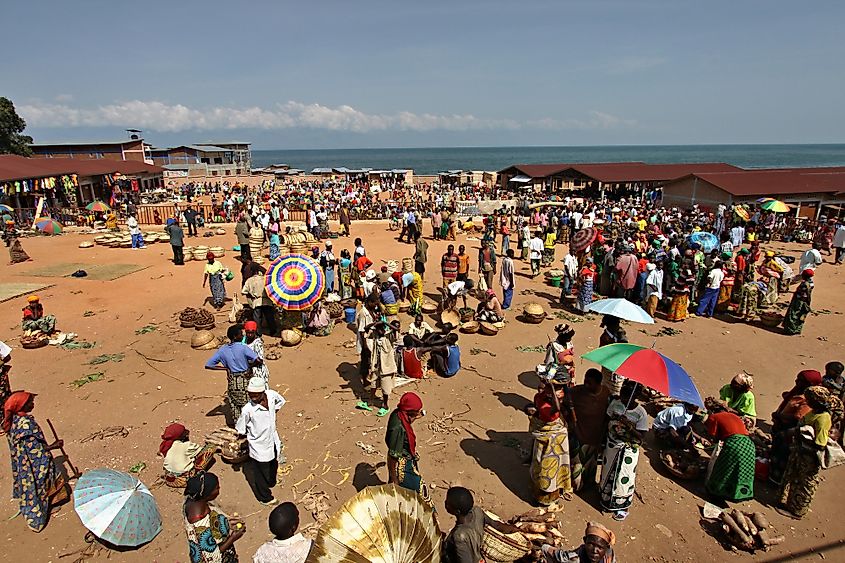
The lake was then later prominent in history, in 1965. At that time, the revolutionary from Argentina, Che Guevara, established a training base for his guerrilla army in the Congo. He used this outpost for training and planning, and attempted to overthrow the government, but was ultimately unsuccessful here due to the interference of the NSA.
Wildlife
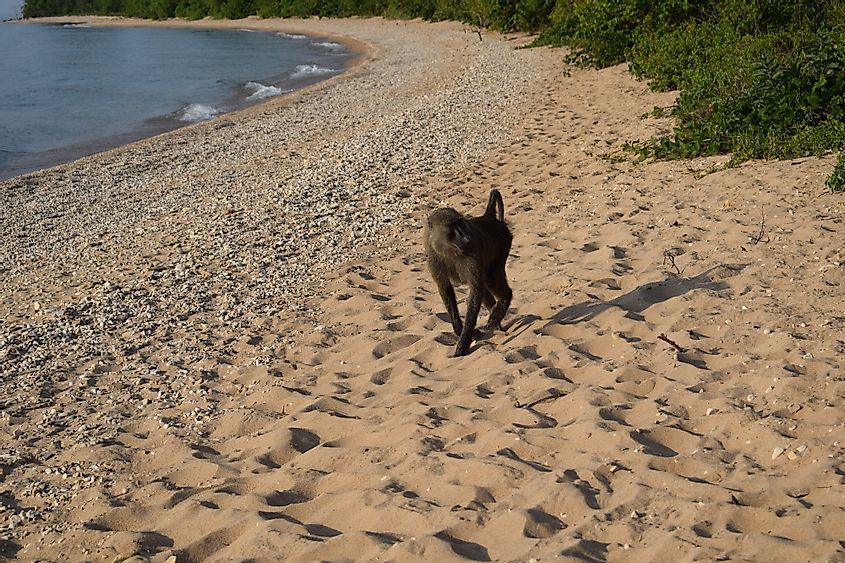
Lake Yanganyika is a very old lake, in an isolated location. Both of these factors mean that it has become an extremely diverse ecosystem and has an exceptionally high percentage of endemic animals - it actually has the highest level of endemicity of any lake on Earth.
Reptiles
The sheer size and depth of the lake has made it an excellent home for larger water-dwelling creatures. A number of different species of reptiles reside within Tanganyika including the Nile crocodile. These giant reptiles can measure on average 16 feet in length and weigh around 500 pounds. Though they do not actively seek out humans, they have been known to attack a human in the water, or along the shore, and are generally not very picky about their prey. With their size and weight, most animals are unable to escape once they have been targeted as a meal.
Some smaller reptiles are also commonly found within the waters of Lake Tanganyika. Terrapins, which are also known as mud turtles, live in abundance here. Both Zambian hinged terrapin and serrated hinged terrapin have been found in the lake. Additionally, water snakes are not uncommon here, and the rare Storm’s water cobra - a threatened species - is endemic to the area.
Fish And Shellfish
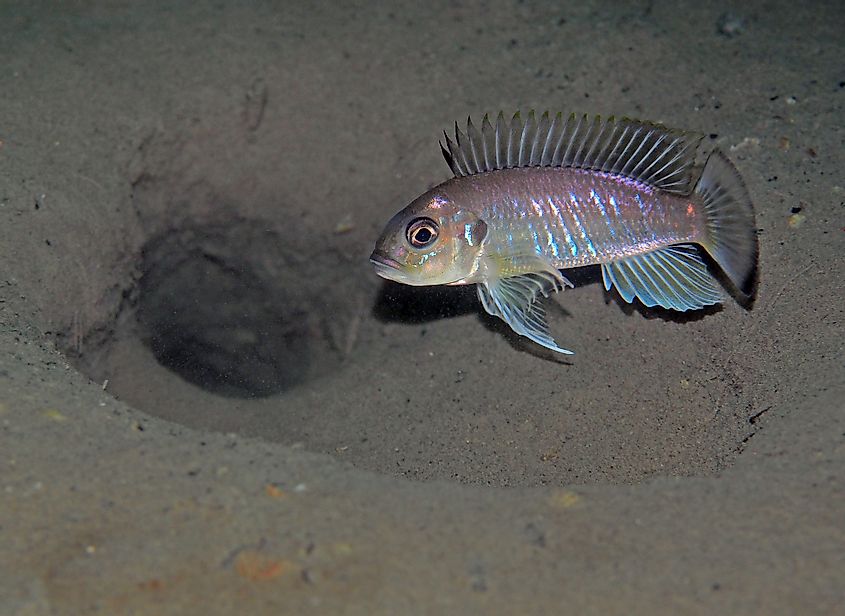
Lake Tanganyika is home to more than 350 species of fish. Many of these are endemic to the lake, meaning they are only found in this one area. A large number of perch reside in these waters, including the Giant Nile Perch and Small Nile Perch, both of which are popular in the fishing industry. Other fish species include the Goliath Tiger, Lake Tanganyika yellow-belly and the Kapenta all of which are fished for food. Cichlids are also found in abundance here, and it is estimated there are roughly 250 different species of cichlids alone. Ninety-eight percent of these cichlids are endemic to the lake.
Crabs and molluscs also live in these waters, and all seven species of crab found in Tanganyika are endemic to that region. Various species of snail also reside in the lake, some of which are also endemic.

